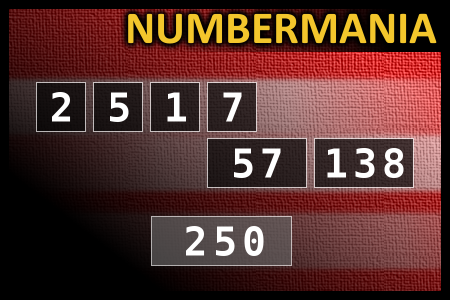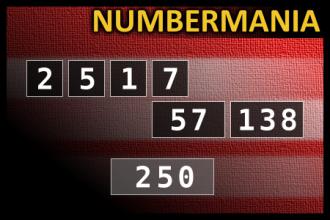Calculate the number 250
NUMBERMANIA: Calculate the number 250 using numbers [2, 5, 1, 7, 57, 138] and basic arithmetic operations (+, -, *, /). Each of the numbers can be used only once.
Cannibal jokes
That reminds me of the cannibal that passed his friend in the woods.....
When do cannibals leave the table? When everyone's eaten.......
What is a cannibal's favorite type of TV show? A celebrity roast.....
Where do cannibals shop for fine furniture? Eatin' Allen's......
What do cannibals eat for dessert? Chocolate covered aunts......
What do cannibals make out of politicians? Baloney sandwiches......
Have you heard about the cannibal restaurant? Dinner costs an arm and a leg......
Did you hear about the cannibal who loved fast food? He ordered apizza with everybody on it.......
Cannibal's recipe book: How to Serve Your Fellow Man.......
One cannibal to another: I never met a man I didn't like...........
Two cannibals were sitting by a fire. The first says, 'Gee, I hate my mother-in-law.' The 2nd replies, 'So, try the potatoes.'

